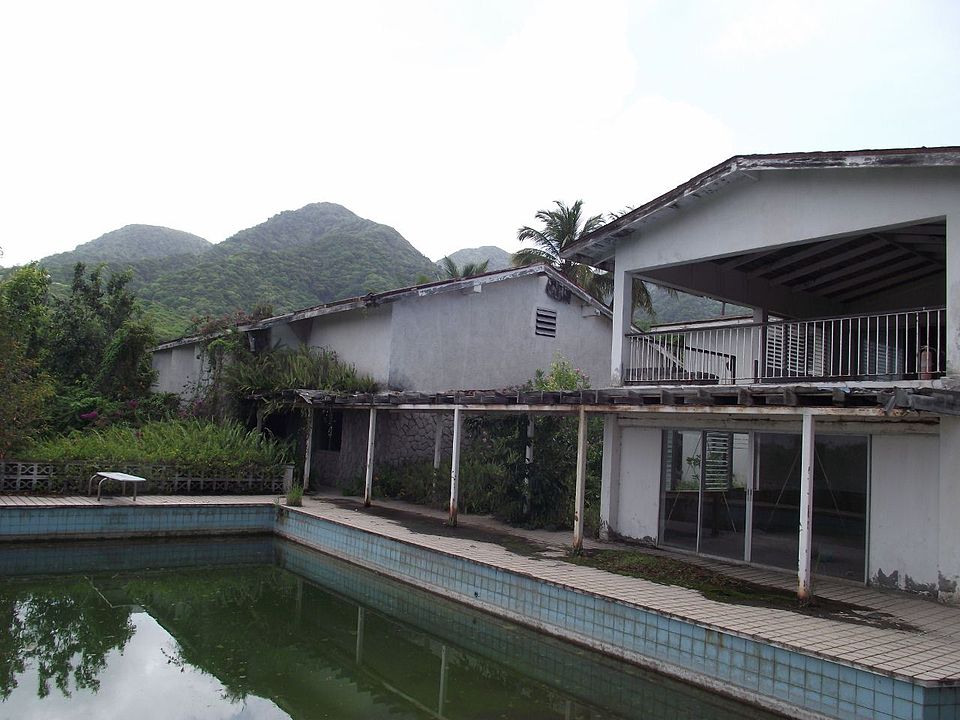Recently, I learned of a recent documentary called “Under the Volcano” about Sir George Martin’s recording studio built on a hill in Montserrat under … well, a volcano. While I have not yet seen the documentary, I did read up on this studio, called AIR Studios Montserrat.
As a music fan in the 1980s, I knew many of my favorite albums of the time had been recorded in the Caribbean. I just didn’t know exactly where, or that most had been made at a single studio: AIR Montserrat. The Police; Dire Straits; Paul McCartney; the Rolling Stones; Jimmy Buffett; Elton John, Earth, Wind, & Fire, and so many others recorded some of their best work in Montserrat. Oh, if those walls could talk! They don’t have much to say anymore, sadly, as they are literally crumbling as the harsh Caribbean weather tears into these exposed, abandoned buildings.
Some say the reason AIR Montserrat succeeded is that recording there was a working vacation for the musicians. It had a pool. Musicians would often bring their families and make a real vacation out of it. Creativity flourished.
Then it all came crashing down in the late 1980s, its decade-plus run ended. Hurricane Hugo ravaged the tiny island, taking the roof of AIR Montserrat with it. Fortunately Martin had planned ahead and secured the state-of-the-art studio’s gear, but it didn’t matter. Martin had seen the writing on the wall: the suits in the record industry weren’t keen to be financing vacations for their talent, beyond their watchful eye. Digital recording was just taking hold, making much of what happened at AIR Montserrat redundant. The studio closed up shop and only a few years later Montserrat’s volcano sealed the deal with a massive eruption. The southern half of the island was buried in pyroclastic flows and mountains of ash. The area of the the studio was declared an exclusion zone and placed off limits. The studio gear was repurposed and the legend of the place was all that was really left.
The story appeals to me for many reasons: the music I love, the glamour of the scene it must have been, the recording engineering aspect, and the urban exploration aspect, too. There was a deeper message here, too, which I only hit on after further thought. It’s what Martin said in an interview when he was asked whether he considered reopening after Hurricane Hugo:
Before we came to Montserrat there was no western music to speak of on the island. Building AIR meant that many leading recording artists came to stay. It cast its spell on them as they mingled with the local people. It was, and still is, a unique place… But after ten great years of recording there the music business had changed fundamentally. The moguls running the business no longer wanted their artists miles away, outside their control. That happened to coincide with the immense devastation caused by the hurricane and sadly the studios had to close. The people of Montserrat are still very proud of the work that was done at AIR Studios.
The changing music industry is what ultimately killed off the studio, and it is this fact that really draws my interest. At the top of its game in the 1980s, AIR Studios was the place for great albums to be made. For me, the studio not only symbolizes the powerful forces of nature that devastated the building, it also symbolizes the last of the glory days of the music industry.
The studio could have easily been rebuilt after Hugo as the damage was manageable. The music industry as it was could not be rebuilt.
And it still cannot. There will never be a place like AIR Studios Montserrat again, because the industry that made it possible was itself swept away. Music is no longer made the way it was. There is only room at the top now for a few and the rest fight for crumbs.
Maybe someday I get a chance to take a tour of AIR Studios Montserrat. I will of course imagine its heyday when my musical heroes were there creating the music that means so much to me. More likely, though, the derelict studio buildings will seem to me more like a cemetery symbolizing what music could never be again. And that’s sad.
